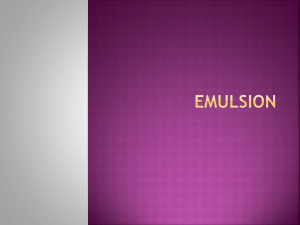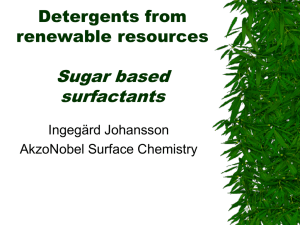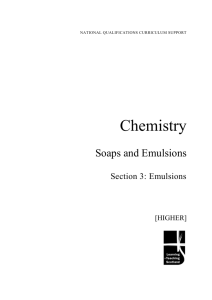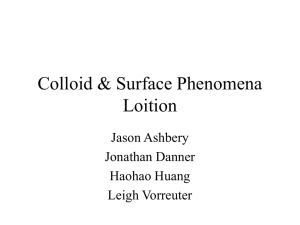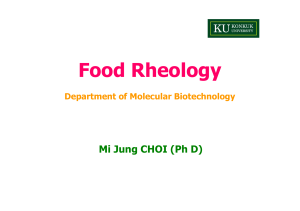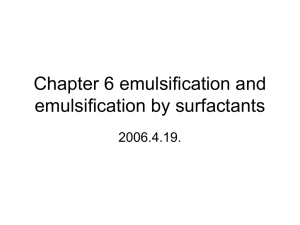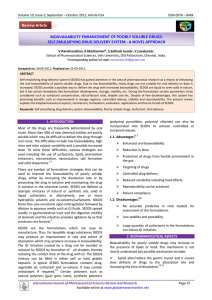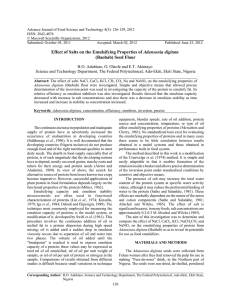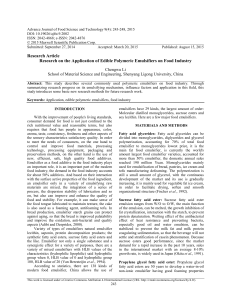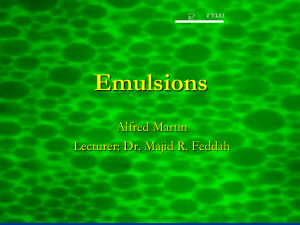4.15 Nonionic emulsifying agents In all of the above molecules the
advertisement
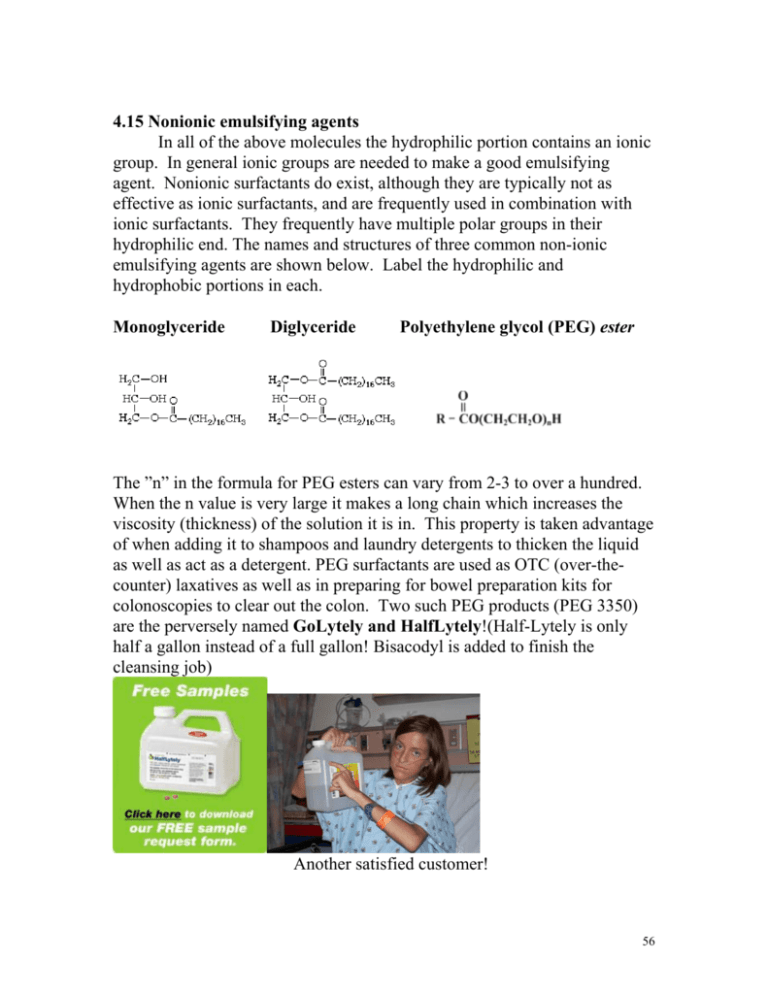
4.15 Nonionic emulsifying agents In all of the above molecules the hydrophilic portion contains an ionic group. In general ionic groups are needed to make a good emulsifying agent. Nonionic surfactants do exist, although they are typically not as effective as ionic surfactants, and are frequently used in combination with ionic surfactants. They frequently have multiple polar groups in their hydrophilic end. The names and structures of three common non-ionic emulsifying agents are shown below. Label the hydrophilic and hydrophobic portions in each. Monoglyceride Diglyceride Polyethylene glycol (PEG) ester The ”n” in the formula for PEG esters can vary from 2-3 to over a hundred. When the n value is very large it makes a long chain which increases the viscosity (thickness) of the solution it is in. This property is taken advantage of when adding it to shampoos and laundry detergents to thicken the liquid as well as act as a detergent. PEG surfactants are used as OTC (over-thecounter) laxatives as well as in preparing for bowel preparation kits for colonoscopies to clear out the colon. Two such PEG products (PEG 3350) are the perversely named GoLytely and HalfLytely!(Half-Lytely is only half a gallon instead of a full gallon! Bisacodyl is added to finish the cleansing job) Another satisfied customer! 56 Sorbitan esters are common emulsifying agents used in cake mixes and skin creams. Sorbitan ester Polysorbates have a polyethoxylated sorbitan bonded in an ester linkage to a long chain carboxylic (fatty) acid. Several variations on polysorbates have the numbers 20,40,60 or 80 after the name polysorbate. These refer to the total number of ethoxylate (OCH2CH2O) units attached to the sorbitan ring. Thus polysorbate 80 has a total of 80 (O-CH2CH2O) attached to the 4 sites shown in the structure. Water-in-oil emulsions The micelles we have discussed so far contain a hydrophobic interior, hydrophilic exterior and exist in a water medium. These types of solutions are called oil-in-water emulsions. If one has a large quantity of oil and only a small quantity of water, together with an emulsifying agent, the emulsifying agents may surround small droplets of water suspended in hydrophobic oil environment (see below). This is called a water-in-oil emulsion or a reverse phase emulsion. This is fairly common in a variety of cosmetic products such as hand lotions and cold creams. 57 oil-in-water emulsion water-in-oil emulsion (Soaps are added to lubricating oils to make reverse micelles which form. The soaps used often use the lithium ion as their positive ion, producing a high melting point grease that will not melt away from the surfaces to be protected) 58

